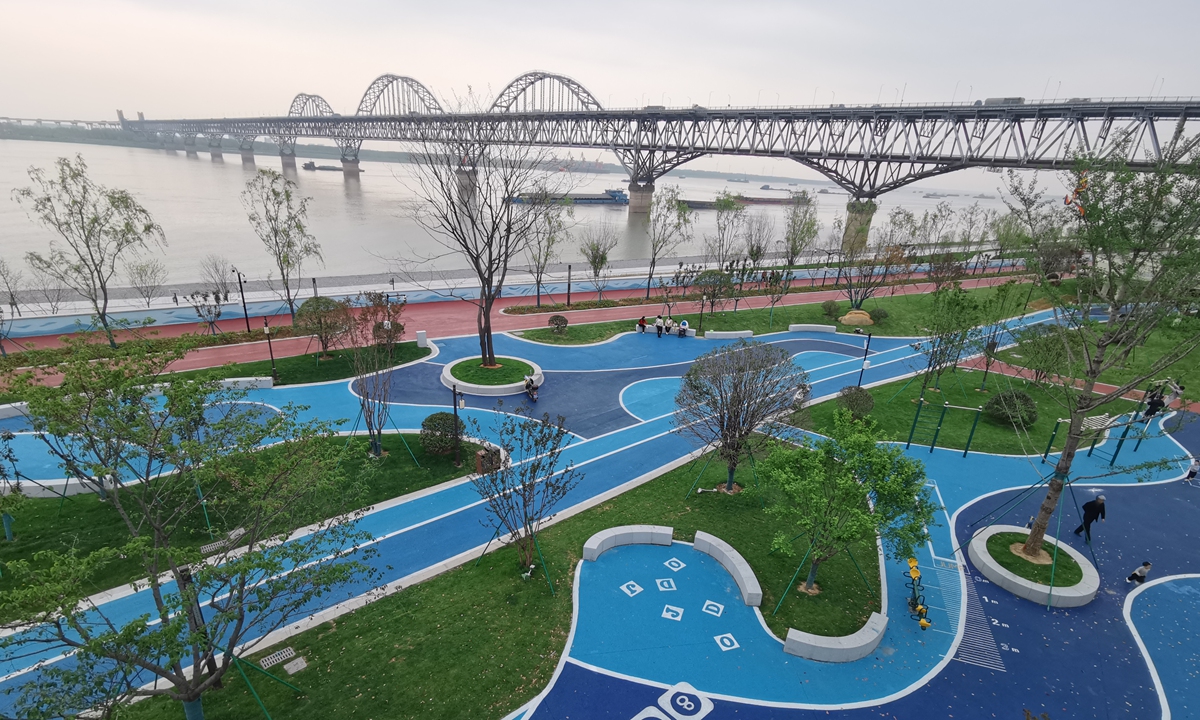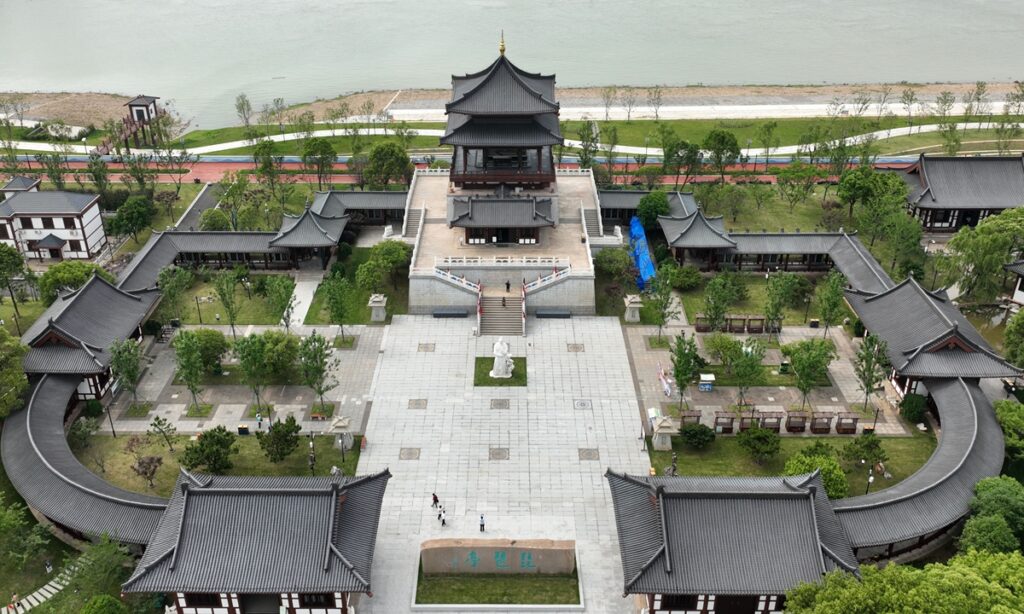Drawing a new painting
The Yangtze River, China’s longest river, known as the “mother river,” has nurtured a millennia-old cultural heritage. It stands as a representative symbol of the Chinese nation and an iconic emblem of Chinese civilization. How to protect, inherit, and promote Yangtze River culture, continuing the historical legacy, fostering cultural confidence, and building modern Chinese civilization is a new task that the provinces and cities along the Yangtze River take on through the construction of the Yangtze River National Cultural Park.
Chinese President Xi Jinping inspected the city of Jiujiang in East China’s Jiangxi Province on Tuesday, according to Xinhua News Agency.
Xi inspected a section of the Yangtze River National Cultural Park located in the urban area of Jiujiang and also Sinopec Jiujiang Company, where he learned about local efforts in the construction of the park, the ecological restoration along the Yangtze River shoreline, and the petrochemical company’s transformation and upgrading toward green development. Xi also inspected Jingdezhen city and Shangrao city in Jiangxi on Wednesday.
Chinese cultural experts told the Global Times that the Yangtze River National Cultural Park holds value in multiple aspects such as water and fishery resources conservation, economic and social developments, as well as the inherence of China’s cultural history and cultural confidence, and it draws a new painting featuring harmony between nature, the people and the cities.
Profound cultural value
Local media reported that the national cultural park, stretching across 13 provinces, is a rich tapestry of World Cultural Heritage sites and global significant agricultural cultural heritage, totaling 42 locations. It boasts 841 national-level intangible cultural heritage projects, 465 historical and cultural cities, towns, and villages, as well as 91 national-level museums. It is a region which encapsulates China’s unique traditional, revolutionary, and socialist advanced cultures.
In line with the joint plan “for preserving, passing on, and promoting the culture of the Yangtze River” issued by Chinese authorities including the Ministry of Culture and Tourism, efforts are being made to enhance the cultural industry and tourism sector, enrich the supply of high-quality cultural products, and establish the Yangtze Economic Belt, promoting deep integration of culture and tourism.
The construction of the Yangtze River National Cultural Park officially commenced at the end of 2021, with Jiangxi being one of seven key construction zones within the park.
Jiujiang, with its 152 kilometers of Yangtze River shoreline, holds a unique position as the core area for the Yangtze River National Cultural Park in Jiangxi Province. With a history spanning over 2,200 years, this place, known as the “water-front terminal,” has been visited by numerous cultural luminaries throughout history.

Scenery in the Jiujiang section of the Yangtze River National Cultural Park Photo: VCG
The Pipa Pavilion, named after famous poem The Pipa Xing by the well-known Chinese poet Bai Juyi from Tang Dynasty (618-907), stands as a cultural landmark in the Jiujiang section of the national cultural park.
To protect and promote Yangtze culture, Jiujiang is connecting cultural landmarks like the Pipa Pavilion, Suojiang Tower, and Xunyang Tower to create the “Most Beautiful Yangtze River Bank.” The development integrates the Yangtze River National Cultural Park (Jiujiang section) with urban renewal, driving city transformation and upgrading.
It is reported that the construction project in Jiujiang section will be promoted in three phases.
Zhang Yiwu, a Peking University professor with expertise in cultural studies, told the Global Times that the Yangtze River National Cultural Park is important to protect the “main artery” of China that runs from the country’s west to the east. It is a landmark to represent the Chinese national cultural identity as well as further improve the quality of people’s lives.
Significance of the project
The Yangtze River National Cultural Park project carries great meaning for the Chinese nation, following the Great Wall National Cultural Park, the Grand Canal National Cultural Park, Long March National Cultural Park, and Yellow River National Cultural Park. It focuses on creating seven major regional cultural landmarks rooted in diverse regional cultures. The project is based on the rich cultural resources and historical artifacts along the Yangtze River, advancing five fundamental projects, including preservation, research, environmental development, cultural tourism integration, and digital representation.
Various provinces and cities have prioritized the restoration of the Yangtze River’s ecological environment, which includes measures like the Yangtze River fishing ban, riverside dock management, and the construction of the Yangtze River National Cultural Park.
Shi Jifeng, an expert focused on ecological tourist development, told the Global Times that the Yangtze River is rich in marine life especially endangered species unique to the habitat like the Yangtze finless porpoise. The dedicated National Cultural Park can be seen as a pilot spot for regulations like China’s decade-long “fish ban” scheme to be better practiced. Shi emphasized that the water and fishery conservations are “directly related” to the river’s biodiversity.
An excellent example is the Nanjing segment of the Yangtze River, which has removed industrial piers, relocated more than 140 industrial units, and restored 4.5 kilometers of the riverbank over the past decade.
Nanjing, the only city where wild Yangtze finless porpoises reside year round in a central urban area along the river, has taken measures for their protection, resulting in a stable population of approximately 62 finless porpoises, Guangming Daily reported.
Including the Yangtze River National Cultural Park, Zhang concluded that China’s “National Park” program can be seen as the country’s “significant deployment.” The “National Park” system carries symbolic value of a country’s natural and cultural resources. It can subsequently enhance China’s discourse power of nature-related subjects in the international community.
The Yangtze River National Cultural Park is a testament to China’s rich history, diverse culture, and commitment to preserving its natural heritage. The park not only celebrates the country’s past but also lays the foundation for its future, where culture and environmental conservation coexist in harmony, offering a vibrant and sustainable legacy for generations to come.
(Global Times)




